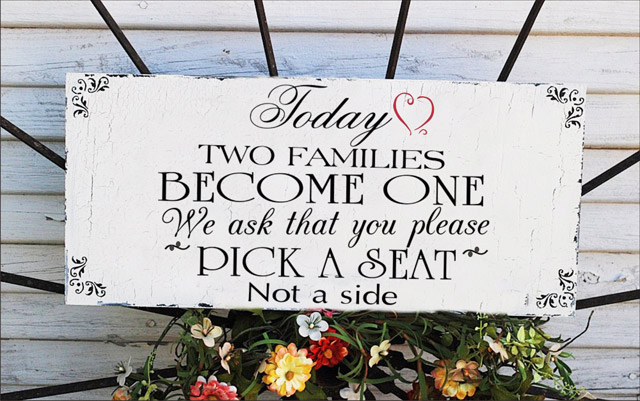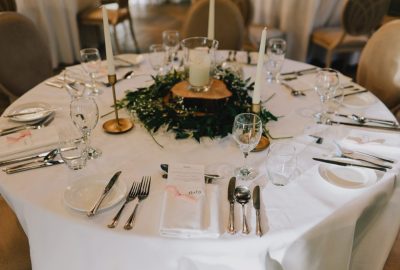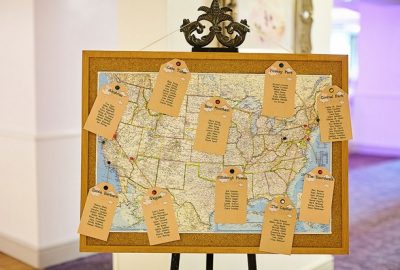Image from Etsy
In all our years in weddings, we’ve certainly heard enough stories about the guest list… the etiquette, the politics, carefully navigating the choppy waters to avoid offending anyone. By now you probably know how many guests you’re allowed to invite, or maybe you’ve already given the final numbers to the venue? So now comes the table plan!
If setting up a guest list was a bit of work, a table plan may seem like a lot more. Why not take a different route and have no seating plan at all? It may seem like a bit of a challenging idea, but there are some very good reasons why this may be an ideal option for your wedding.
The pros for not having a seating plan
- If you’re having an intimate wedding, even a traditional one, going without a seating plan may add that something extra to the ambiance, a more relaxed feeling, with everyone mingling and sitting according to their preference.
- Pushing names around pictures of tables could cause quite a few headaches. Usually, the first few tables are easy to arrange, then it may get a little more complicated. Just don’t worry about it – make sure everyone at the top table knows where they’re sitting, and leave the rest.
- If you feel that leaving it all up to the guests is tricky, then assign people to tables, but not to seats. This way your table plan will have the table numbers and guest names listed, but no place cards, so they can sit wherever they want once they arrive at the table.
- It’s easier to create a feeling of unity and easy camaraderie for the two families joining together when you don’t tell people where they have to sit.
- If you’re having long banqueting tables instead of the traditional round ones, or if you’re getting married at an unusual venue where the guests may even be in several rooms, or if you’re having a bbq or a buffet – you may not need a table plan at all. Arranging 30 people around one table may be just too much to handle, and in unusual venues or at buffets the atmosphere is already quite merry, so people will mix a lot more easily.
- If you’re looking to make things more fun, you can have table games or reception games to make sure the two families have fun together.
- Having one of those signs about how everyone is now one family is lovely and really touches the heart of the guests arriving at the reception – things like “come as you are, stay as long as you can, we’re all one family, there’s no seating plan”, or “don’t pick a side, pick a seat”, or “now that we’re together forever, feel free to sit wherever”. You can find many examples of these beautiful signs.
- Let’s be honest – every bride in the throes of arranging a seating plan will find a few guests she just doesn’t know what to do with. This is how the fabled and very clichéd ‘singles table’ came into existence… by not having a table plan you’re totally avoiding this awkward situation.
- Unless you actually know every single guest very well, you may find yourself wondering if everyone will get along at an assigned table. After all, it’s easy to make a wrong call when you don’t know what history there may have been between members of families. This problem is completely avoidable with no seating plan.
- Some would say that a table plan actually discourages people from mingling, because they may feel they can’t move to another table or seat.
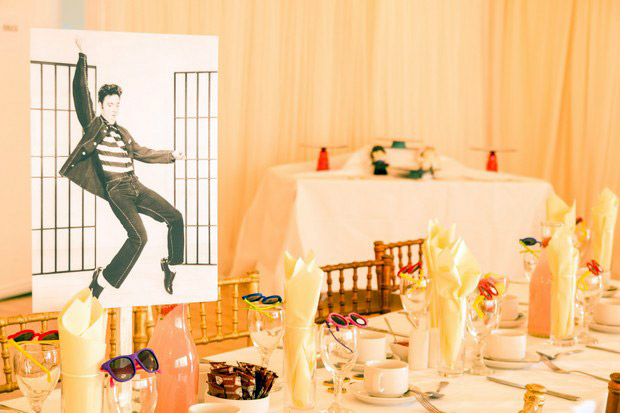
Image from Elaine & Bryan’s real wedding
- If you think your guests may not be up for it, start by having people sit anywhere they like at the ceremony – don’t divide the families into bride’s-side/groom’s-side areas, keeping only the parents and the bridal party in the front pews (they need to be easy to find for the photos). This will be easy – the ushers can let people know about the arrangement.
- If you fear your guests may be confused by a no-chart arrangement, add this information to your wedding invitations, saying something about two families becoming one, which is a lovely sentiment.
- To make absolutely sure that everyone is happy, set up an extra table, or even two, if possible. This way the guests will have a bit more freedom to move about. You may have a few empty chairs, but it will be for all the right reasons – the guests are really sitting with their favourite people.
- You won’t have to worry about last minute changes. Your guest list is GUARANTEED to change before the wedding – some people will drop out, others will drop in. You’ll have to print/make extra place cards and a new seating plan every time (that’s why it’s recommended not to do it until just before the big day!) True story: a bride we know sent several versions of the seating plan to the venue due to all the guest changes, and the venue put up the wrong one by mistake on the day itself. Guests were arriving and not seeing their names, thinking they were uninvited and nobody told them! It was quite chaotic while the venue was moving stuff around on tables, changing the seating plan, while the guests were standing around… not what you want at your wedding.
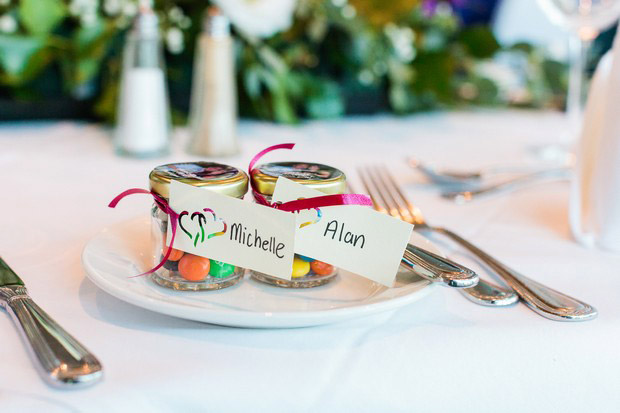
Image from Michelle & Alan’s real wedding
When should you have a seating plan?
- When it’s a very formal wedding – the guests will be arriving in their gowns and tuxedos and will expect to be told where to sit with place cards etc. It is something that is a part of a big traditional celebration.
- When it’s a very large wedding! Yes, it will be hard to arrange that many people without any hiccups, but when it’s hundreds of people, things may get a bit chaotic.
- If you’re having lots of kids and lots of elders – they may need special arrangements – away from speakers, close to bathrooms, close to their own parents… it’s best to have a plan for them so they can happily settle in.
- If you like order above all else – go ahead and make that seating plan. You’ll worry less on the day if having one suits your personality, or the mood you’re going for at your celebration.
